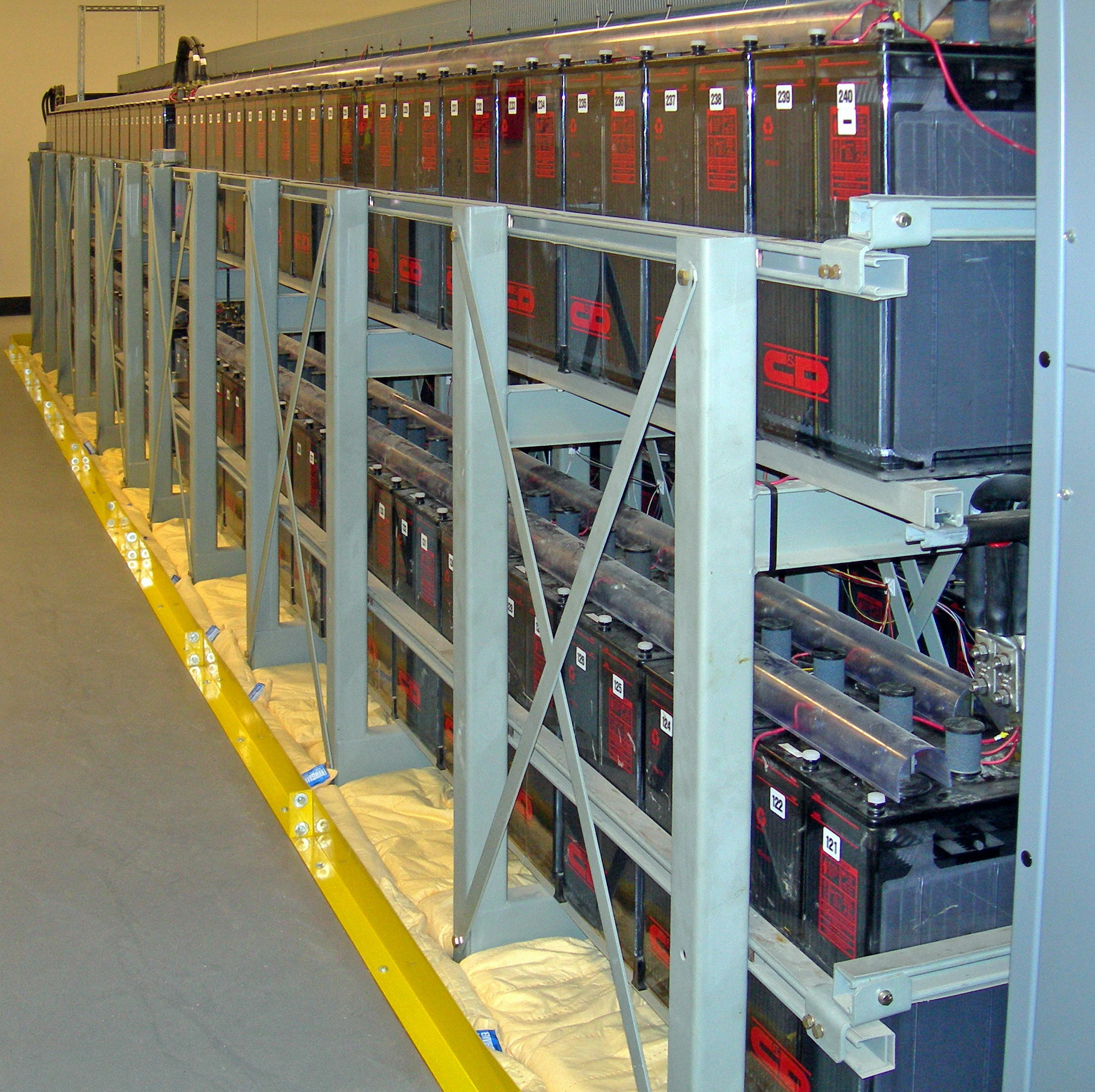|
Nanopore Battery
A nanopore battery is a rechargeable battery that is a composite of billions of nanoscale batteries formed within the pores of a substrate. The space inside the holes is so small that billions of pores combined equal the volume of a grain of sand. Each pore's diameter was some one eighty-thousandth the width of a human hair. Construction In 2014 a demonstration device was made from a ceramic sheet made of anodic aluminum. It held two vanadium pentoxide nanotube electrodes separated by an electrolyte that carried the electrical charge between the two. The current collector was made of ruthenium. The individual batteries are connected in parallel. The is prelithiated at one end to form the anode, with pure at the other end to form the cathode. The battery asymmetrically cycles between 0.2 V and 1.8 V. Performance The capacity retention of this full cell (relative to 1 C values) is 95% at 5 C and 46% at 150 C, with a 1,000-cycle life. A demonstration device was fully charged ... [...More Info...] [...Related Items...] OR: [Wikipedia] [Google] [Baidu] |
Rechargeable Battery
A rechargeable battery, storage battery, or secondary cell (formally a type of energy accumulator), is a type of electrical battery which can be charged, discharged into a load, and recharged many times, as opposed to a disposable or primary battery, which is supplied fully charged and discarded after use. It is composed of one or more electrochemical cells. The term "accumulator" is used as it accumulates and stores energy through a reversible electrochemical reaction. Rechargeable batteries are produced in many different shapes and sizes, ranging from button cells to megawatt systems connected to stabilize an electrical distribution network. Several different combinations of electrode materials and electrolytes are used, including lead–acid, zinc–air, nickel–cadmium (NiCd), nickel–metal hydride (NiMH), lithium-ion (Li-ion), lithium iron phosphate (LiFePO4), and lithium-ion polymer (Li-ion polymer). Rechargeable batteries typically initially cost more ... [...More Info...] [...Related Items...] OR: [Wikipedia] [Google] [Baidu] |
Vanadium Pentoxide
Vanadium(V) oxide (''vanadia'') is the inorganic compound with the formula V2 O5. Commonly known as vanadium pentoxide, it is a brown/yellow solid, although when freshly precipitated from aqueous solution, its colour is deep orange. Because of its high oxidation state, it is both an amphoteric oxide and an oxidizing agent. From the industrial perspective, it is the most important compound of vanadium, being the principal precursor to alloys of vanadium and is a widely used industrial catalyst. The mineral form of this compound, shcherbinaite, is extremely rare, almost always found among fumaroles. A mineral trihydrate, V2O5·3H2O, is also known under the name of navajoite. Chemical properties Reduction to lower oxides Upon heating a mixture of vanadium(V) oxide and vanadium(III) oxide, comproportionation occurs to give vanadium(IV) oxide, as a deep-blue solid: :V2O5 + V2O3 → 4 VO2 The reduction can also be effected by oxalic acid, carbon monoxide, and sulfur dioxi ... [...More Info...] [...Related Items...] OR: [Wikipedia] [Google] [Baidu] |
Non-carbon Nanotube
A non-carbon nanotube is a cylindrical molecule often composed of metal oxides, or group III-Nitrides and morphologically similar to a carbon nanotube. Non-carbon nanotubes have been observed to occur naturally in some mineral deposits. A few years after Linus Pauling mentioned the possibility of curved layers in minerals as early as 1930, some minerals such as white asbestos (or chrysotile) and imogolite were actually shown to have a tubular structure. However, the first synthetic non-carbon nanotubes did not appear until Reshef Tenne ''et al.'' reported the synthesis of nanotubes composed of tungsten disulfide (WS2) in 1992. In the intervening years, nanotubes have been synthesised of many non-carbon materials, such as vanadium oxide and manganese oxide, and are being researched for such applications as redox catalysts and cathode materials for batteries. History and occurrence Non-carbon nanotubes are morphologically similar to carbon nanotubes and are observed in some mineral ... [...More Info...] [...Related Items...] OR: [Wikipedia] [Google] [Baidu] |
Ruthenium
Ruthenium is a chemical element with the symbol Ru and atomic number 44. It is a rare transition metal belonging to the platinum group of the periodic table. Like the other metals of the platinum group, ruthenium is inert to most other chemicals. Russian-born scientist of Baltic-German ancestry Karl Ernst Claus discovered the element in 1844 at Kazan State University and named ruthenium in honor of Russia. Ruthenium is usually found as a minor component of platinum ores; the annual production has risen from about 19 tonnes in 2009Summary. Ruthenium platinum.matthey.com, p. 9 (2009) to some 35.5 tonnes in 2017. Most ruthenium produced is used in wear-resistant electrical contacts and thick-film resistors. A minor application for ruthenium is in platinum |
List Of Battery Types
This list is a summary of notable electric battery types composed of one or more electrochemical cells. Three lists are provided in the table. The primary (non-rechargeable) and secondary (rechargeable) cell lists are lists of battery chemistry. The third list is a list of battery applications. Battery cell types See also * Baghdad Battery * Battery nomenclature * Carnot battery * Comparison of commercial battery types * History of the battery * List of battery sizes * List of energy densities * ''Search for the Super Battery'' (2017 PBS film) * Fuel cell A fuel cell is an electrochemical cell that converts the chemical energy of a fuel (often hydrogen fuel, hydrogen) and an oxidizing agent (often oxygen) into electricity through a pair of redox reactions. Fuel cells are different from most bat ... References {{Battery sizes * Battery ... [...More Info...] [...Related Items...] OR: [Wikipedia] [Google] [Baidu] |



